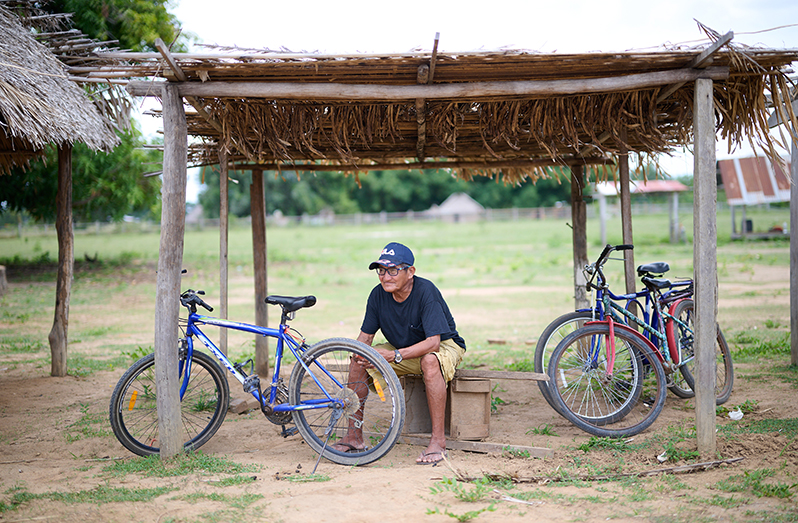The Macushi village keeping its heritage alive while forging a sustainable future
AMONG the red-dusted Indigenous communities of the Rupununi, the village of Shulinab stands out as one of the only Macushi-speaking communities in the South Rupununi. Located just outside of Lethem, Shulinab has worked to preserve its vibrant cultural heritage while continuing to pioneer new initiatives and projects for the community. Under the guidance of Toshao Nicholas Fredericks and a dynamic group of local councillors, Shulinab is upholding its time-honoured traditions—from rodeo events to agro-processing—while simultaneously embracing new development projects in infrastructure, aquaculture, and tourism.
In an interview with Pepperpot Magazine, Toshao Fredericks shared insights into the deep-rooted customs that define Shulinab’s identity, as well as the transformative efforts being made to blend tradition with sustainable development seamlessly.
Honouring Tradition and History
For generations, Shulinab has maintained its distinct cultural practices, language, and way of life, making it one of the last strongholds of the Macushi language in Guyana. The village’s connection to its past is evident not only in the language spoken by its people but also in the cultural practices they uphold.
One of the most prominent of these traditions is the annual rodeo event, which has become synonymous with communities like Shulinab. For Shulinab, rodeo is not just an event; it illustrates the community’s deep-rooted connection to livestock production and cowboy heritage. The village’s long-standing tradition of cattle farming, herding, and horsemanship is what makes the rodeo a unique celebration.
As the region gears up for rodeo season, Shulinab is preparing its famed bucking broncos for competition. “Rodeo is an important tradition for us because livestock and cowboy skills are essential here,” Toshao Fredericks said. He added, “Our women prepare and sell traditional foods at the event, such as farine, sour bread, and local beverages. This year, we will have a booth at the Lethem Rodeo, and we invite visitors to come and experience our culture firsthand.”
The rodeo is not only a cultural celebration but also an important economic opportunity for Shulinab. The event attracts hundreds, if not thousands, of tourists each year, allowing the community to showcase its cowboy skills, traditional foods, and crafts.
Preparations for the rodeo have already begun, and excitement in Shulinab and throughout Lethem is evident, with residents gearing up in their own ways. This year, Shulinab is playing a key role in kicking off Rodeo 2025. “On the 4th and 5th of April, we will be hosting a rodeo in Fairview, one of our satellite communities, to start the rodeo season. We are grateful for the sponsorship and support from the Ministry of Natural Resources, businesses in Lethem, and other agencies. Our community provides bucking broncos for the regional rodeos, and we will be doing so again this year. We are also sending participants to compete and showcase their skills,” Toshao Fredericks explained.

Embracing Development and Change
While tradition remains at the heart of Shulinab, the village is equally committed to embracing progress and change. Through strategic developmental projects, the community is actively working to improve infrastructure, create new economic opportunities, and safeguard its environment and rich natural flora and fauna. These projects, many of which are supported by the government and local entrepreneurs, are transforming the village, bringing new opportunities and industries to the community.
“The name ‘Shulinab’ comes from a palm tree that once existed only in this part of the village, on the northeastern side near the Kanuku Mountains,” Toshao Fredericks shared.
With a population of approximately 425 people and two satellite communities, Shulinab’s progress has been nothing short of impressive. In recent years, the village has benefitted from several government interventions aimed at improving infrastructure and economic opportunities. These include a floodlights programme, a multi-purpose centre currently under construction, and a brick factory project that will provide employment and reduce the village’s dependence on outside sources for construction materials.
Additionally, the village is expanding its livestock programme. Speaking about some of the other ongoing projects, Toshao Fredericks stated, “We are also implementing an aquaculture programme to reduce pressure on natural ecosystems while providing an alternative food source and livelihood for residents.”
The agro-processing programme has become a source of pride for the women of Shulinab. Their ability to turn surplus fruits into valuable products has bolstered the local economy and reduced food waste.
Moreover, their work in agro-processing helps to preserve cultural knowledge of traditional food preparation. “Our women’s group is very active in agro-processing. We process local fruits like mangoes and cashews that would otherwise go to waste, turning them into dried fruits, pulps, and preserves for children and visitors. These initiatives not only help us to reduce waste but also create new income streams for our families,” Toshao Fredericks stated.
Shulinab’s commitment to sustainability is evident not only in its efforts to protect the environment through aquaculture and agro-processing but also in its growing interest in tourism. The village is well-positioned to offer visitors a unique cultural experience, where they can learn about Macushi traditions, explore the natural beauty of the surrounding savannahs and mountains, and participate in the annual rodeo festivities.
“We also see tourism as a key part of our development. Shulinab is an easily accessible area for tourism, and we are working to develop this sector further. We want people to visit and learn about our community, our culture, and the sustainable projects we are working on,” Toshao Fredericks shared.
As Shulinab moves forward, its leaders and residents remain focused on the delicate balance between honouring their past and building a sustainable future.



.jpg)








